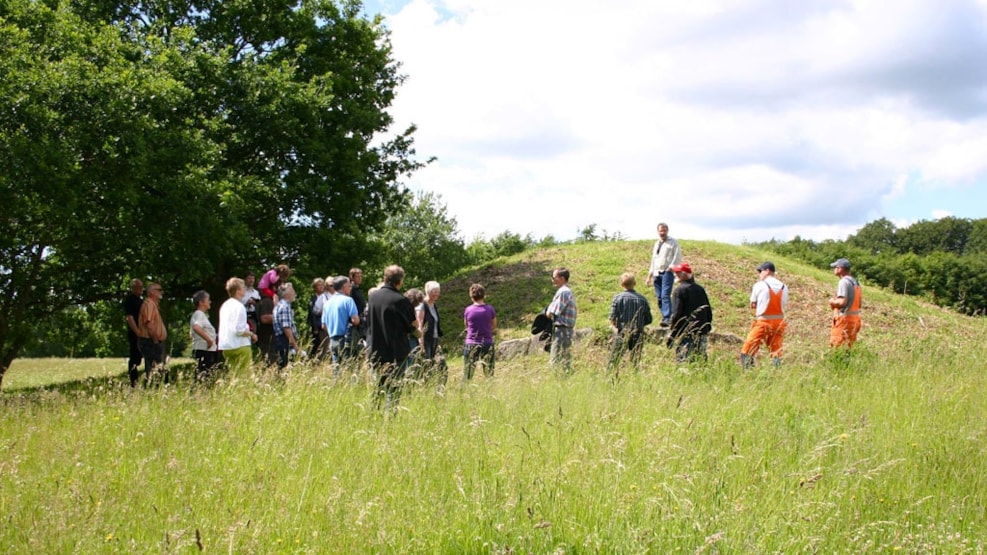
Geopark: Gamle Hestehaves bronzealderhøje
The religious world of the Bronze Age was probably the most colourful one in Danish prehistory
They danced dressed in cord skirts to the sounds of the lures, told stories of the sun travelling across the sky, and sacrificed ancient artefacts to the gods.
In the forests east of Svendborg, Gamle Hestehave, Stevneskov, and Hallindskov, situated on an undulating till plain from the Young Baltic Glaciation, there are many traces of the religious rites from the Bronze Age. Most striking are the 23 visible barrows erected in the period between 1800 and 1000 BC. The dead were buried in these barrows in oak timber coffins with personal belongings such as jewellery and weapons.
But uniquely in Gamle Hestehave, they have also found traces of two other religious rites. The first is a stone with petroglyphs. The local nickname for the stone is the Æbleskive stone because of its 105 round indentations. (An æbleskive is a Danish doughnut-like pastry made of a liquid pancake dough and then cooked in a special pan with deep round indentations). These indentations on the stone are called bowl signs and they are one of the most common type of petroglyphs in Denmark. Their exact usage is still a riddle but clearly falls in the religious sphere of the Bronze Age.
The second trace is not visible today, however, sometime in the Early Bronze Age a harness for a horse was sacrificed. The harness consisted of 25 round plates of bronze originating in Central Europe.
But it was not just during the Early Bronze Age that Gamle Hestehave was used for burials. The area was already being used for burials in the late part of the Neolithic. In a coffin made of flat stones, a so-called cist, two skeletons were found, each in their own chamber. However, they were not the first ones in the cist as the dig revealed that those who were buried earlier had simply been pushed to the side to make room for the new ones. This not an unknown phenomenon when you look at other cists or even the earlier dolmens and passage graves from the Neolithic.